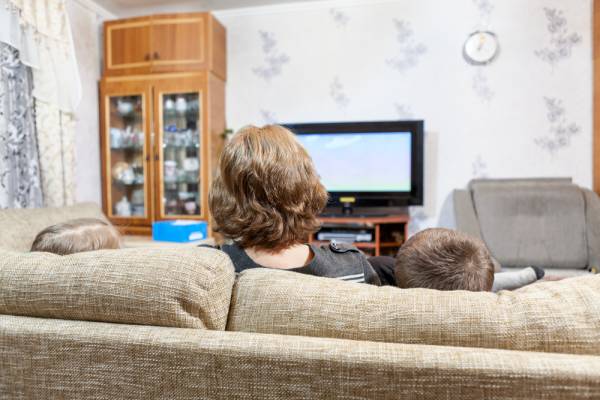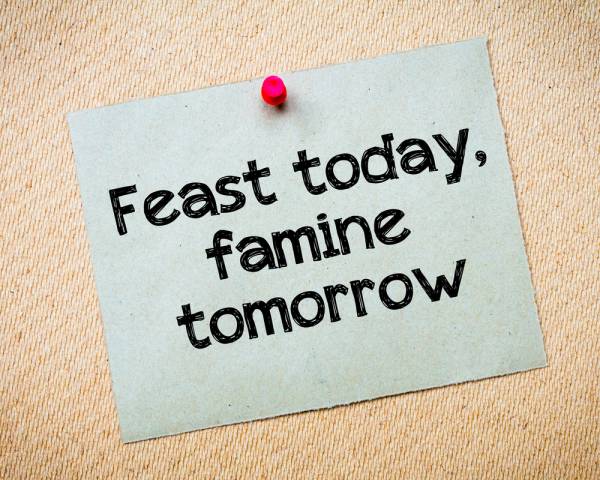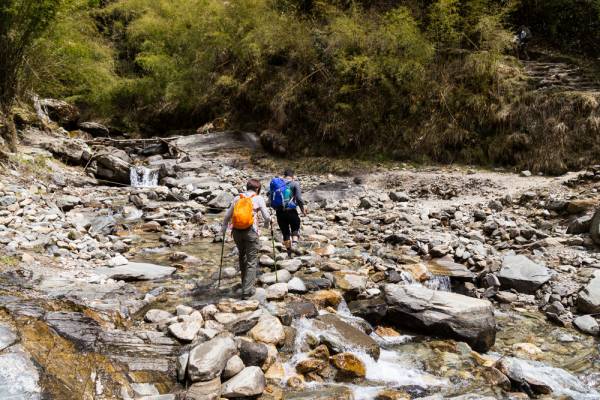The transformation of the black peppered moth during the Industrial Revolution is the ubiquitous example of evolution in action. Coal-burning factories in English cities sprayed black soot into the air that covered nearby trees in a dark ash.
Black moths survived through selection due to the convenient camouflage provided by pollution, whereas the lighter, speckled moths died off due to susceptibility to predators.
Pretty remarkable camo, I’d say.
Such a dramatic shift in the physical characteristics of a species had never before been observed and the story remains a common classroom model for the Darwinian dynamic of natural selection.
We often speak of natural selection in terms of other species, but we rarely speak of it in relation to our own human existence. Perhaps there is something inherently nefarious when considering a person as potentially expendable through biological change as a moth, but this does not mean we are unsusceptible to the same power of change that effects everything else in nature.
In fact, several studies over the past decade have analyzed the health problems that beleaguer our modern condition in just this way.
What Is Really Making Us Sick?
It is often more comfortable to blame external circumstances when it comes to the prevalence of so-called “lifestyle” diseases. We are overweight because of gluten, genetically modified crops, sugary beverages, and so forth. We have heart disease because of stress. We are weak and movement impaired from a lifetime of sitting.
In placing the blame on something external, it becomes something we can control. You can avoid eating processed grains, you can listen to soothing music and meditate, and you can buy the standing desk. We have entire industries dedicated to finding solutions for all of our problems.
“We have, at the core of the human species, become genetically maladapted for survival due to our increasingly sedentary, physically undemanding lives.”
But in a 2002 study published in the Journal of Physiology, a deeper root cause was explored in regards to the myriad health concerns we face today. Our main problem, it seems, is far more complex than any single nutritionist would be able to admonish in the pages of a bagel-abhorring book.
We have, at the core of the human species, become genetically maladapted for survival due to our increasingly sedentary, physically undemanding lives.

Nothing Comes Without a Price
The hallmarks of human achievement – innovation, exploration, technology, civilization – have all come with a price: the stability of the human genome. For everything we externally gain as a species, we pay a corresponding price with our health and bodies. Nature is the lender to whom we become further indebted, and the more we seek to borrow, the closer we get to our limit. Eventually, when nature comes to collect, who do we become?
Light moths in a forest of dark trees.
That is some heavy shit.
But sometimes you have to throw around some weight to get perspective. Have you ever been stuck on the same weight on the bar? Throw on five or ten pounds and try to lift that. Chances are you miss or bail, but hey, at least that same old weight doesn’t seem as heavy anymore.
“The hallmarks of human achievement – innovation, exploration, technology, civilization – have all come with a price: the stability of the human genome.”
We were not built to be linearly periodized. Aerobic exercise wasn’t a choice. There was no meal planning, “macros,” or gap-filling supplementation. Intermittent fasting was not a deliberate practice – it was a fact of life. You ate when there was food, and when there wasn’t food, there wasn’t food. There was no way to fulfill a craving. You couldn’t use the phone to order food for the family. You had to go find it, and sometimes it could take days. You didn’t call it “fasted anaerobic conditioning” when your first meal in a week was about to run away. You sprinted your ass off because you had to.
The True Disconnect With Our Ancient Selves
Much of what we obsess about when it comes to our modern lifestyles is myopic when it comes to the true disconnect we have with our Paleolithic selves. I promise you that eating a five-dollar bar made of pumpkin and nuts isn’t going to bring you any closer to ten thousand years ago.
For the hunter-gatherers, with whom we share over ninety percent of our current genome, there were no questions on how to become inspired for physical activity, or how to eat mindfully, or an appropriate rest period after an intense training session.
Physicality was life.
We stored nutrients based on intermittent periods of feast and famine. Our muscles were strong through the rigorous toils of everyday survival. There was no need to plan or motivate. We did because we had to. Because there was no other choice.

The Human Need For Control
As pointed out by Matt Perryman in Squat Every Day, Friedrich Nietzsche and Nassim Nicholas Taleb have written extensively about our obsessive human need to assert control in the face of inherently chaotic systems. As we see ourselves become sicker and weaker with each generation, our diet and exercise arguments seem that much more asinine in retrospect.
“There is something much more complex going on within our bodies than could ever be mitigated by our so-called modern medical panacea.”
We aren’t sick because of bread. We are sick because ten thousand years ago, through the process of natural selection, the hunter-gatherer genotype prevailed: genes suited for high levels of physical activity, periodic inaccessibility to proper nutrition, and low amounts of un-survival related bouts of stress.
A 2010 commentary by The Physician and Sports Medicine Journal observed:
“This discordance has left us genetically adapted for the rigors of life as hunter-gatherers despite the fact that we are inhabitants of a high technology, sedentary, overfed and emotionally stressed-out 21st century environment.”
We create more food, and we become more overweight. We want more, so we work more, and we move less. We bombard ourselves with technological stimuli and then wonder why we have become so unfocused and depressed.
What Is Best In Life?
Humans adapted to be flexible, strong, and aerobically fit – all to endure the harshest of conditions. Our modern condition (albeit with varying amounts of geographical and societal stress) represents nothing of the sort. We never would have survived among our ancestors. The way we live our lives has evolved faster than nature, and now our Paleolithic genes are being selected to die in our current environment.

This is not meant to be a dystopian view on life. These are just things to consider when we allow exercise and nutrition to become overly analytical. There is something much more complex going on within our bodies than could ever be mitigated by our so-called modern medical panacea.
What can we do, though, to maximize our bodies and lives within the time and space we occupy? The Physician and Sports Medicine Journal offered a few suggestions:
- Walk often
- Get stronger
- Sleep and rest frequently
- Have sex
- Exercise with friends
- Dance
- Occasionally run or sprint for the hell of it
Now that is a list I can get on board with.
You’ll also enjoy:
- Your Lifestyle Outside the Gym Can Prevent Metabolic Syndrome
- Your Lifestyle Choices Are Killing You and Your Children
- Overcoming Loved Ones’ Resistance to Our Lifestyle Improvements
- What’s New On Breaking Muscle Today
References:
1. O’Keefe, James H., Robert Vogel, Carl J. Lavie, and Loren Cordain. “Organic Fitness: Physical Activity Consistent with Our Hunter-Gatherer Heritage.” The Physician and Sports Medicine Journal 38, no. 4 (2010): 1-8. Accessed June 2, 2015
2. Booth, Frank W., Manu Chakravarthy, and Espen E. Spangenburg. “Exercise and Gene Expression: Physiological Regulation of the Human Genome through Physical Activity.” The Journal of Physiology 543, Part 2 (2002): 399-411. Accessed June 1, 2015. doi:10.1113/jphysiol.2002.019265.
3. “Peppered Moth Evolution.” Wikipedia. Accessed June 2, 2015.
4. Perryman, Matt. “Squat Every Day.” Myosynthesis, 2013.
Photos courtesy of Shutterstock.






